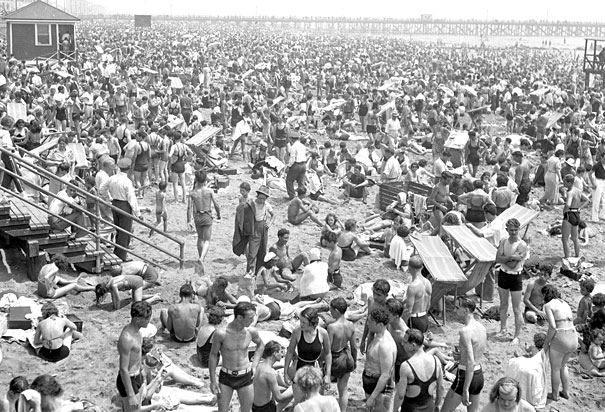
The Cyclone Roller-coaster in the 1970's. 1

Coney Island during the Great Depression Heat Wave. 3

"The Jokers" on the Subway. 5
Click here to see compare to how Coney Island is NOW!
- Saliba, Mike. Cyclone Rollercoaster – Coney Island. Digital image.Http://blogs.villagevoice.com/. Web. <http://blogs.villagevoice.com/runninscared/cyclonebw.jpg>.” ↩
- Stanton, Jeffrey. “Coney Island History Site.” Coney Island History Web Site. 8 Aug. 2007. Web. 02 May 2012. <http://www.westland.net/coneyisland/>. ↩
- New York's Coney Island During the North American Heat Wave of 1936. Digital image.Www.history.com. Getty Images. Web. <http://www.history.com/images/media/slideshow/heat-waves/coney-island-1936.jpg>.” ↩
- “Coney Island History.” Coney Island History. Web. 02 May 2012. <http://www.vanalen.org/competitions/ConeyIsland/background.htm>. ↩
- Davidson, Bruce. Brooklyn Teen Gang, The Jokers, 1959. Digital image.Www.americanproject.tv. Web. <http://www.americanproject.tv/storage/subway.jpeg?__SQUARESPACE_CACHEVERSION=1314276514408>.” ↩
- “American Project – Content – Brooklyn Teen Gang, The Jokers, 1959.” American Project. AP Staff, 25 Aug. 2011. Web. <http://www.americanproject.tv/content/brooklyn-teen-gang-the-jokers-1959.html>. ↩
- Professor Solomon. Coney Island. Baltimore, MD: Top Hat, 1999. Print. ↩

